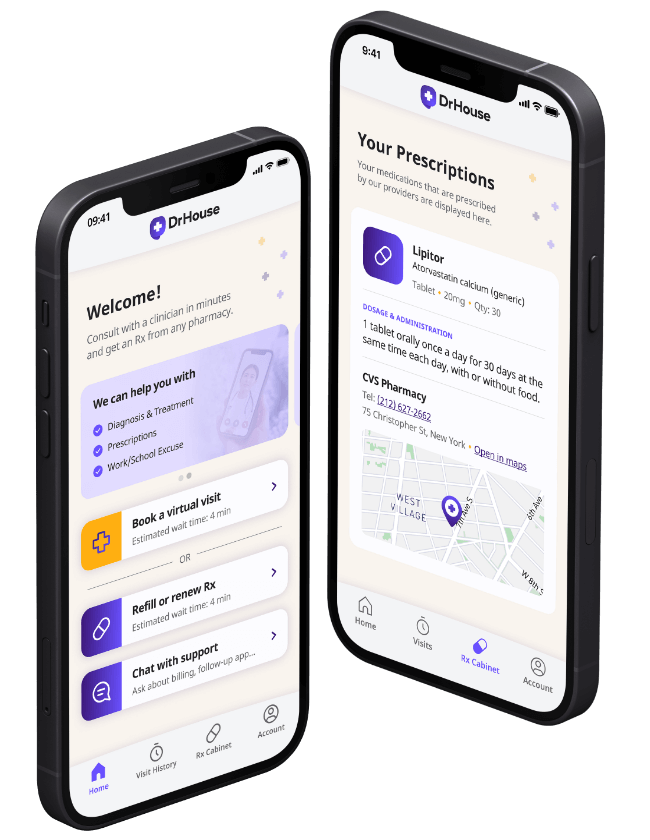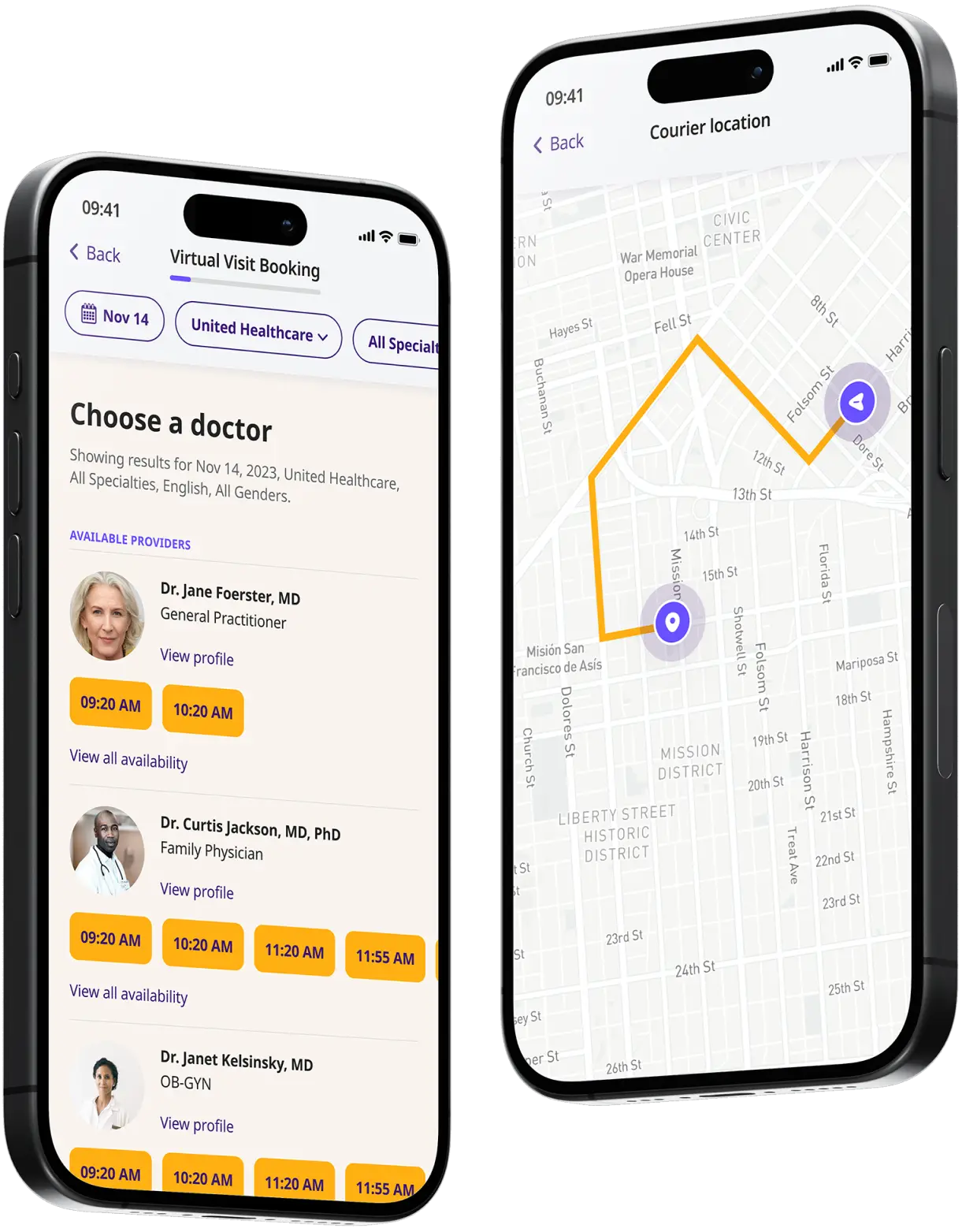Contact Dermatitis Treatment Online
Ease itching and redness caused by contact dermatitis. Get expert advice and treatment from online doctors today.
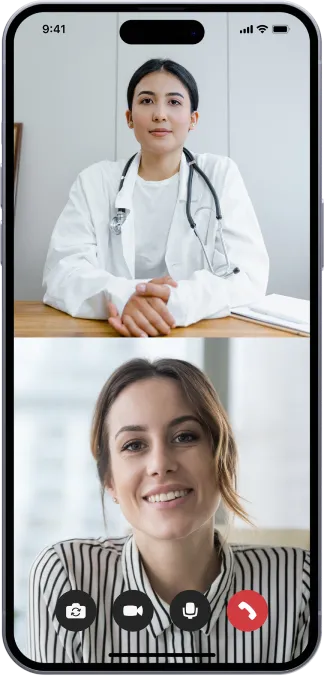
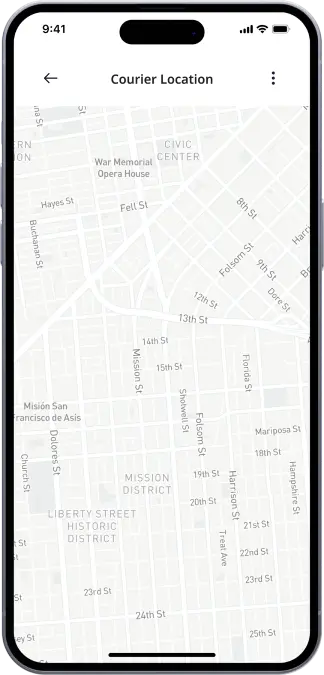
Available in 50 states. Insurance accepted.
Fast
virtual visits
24/7 care
assistants
Prescriptions
as needed

24/7 Personal Care
Consult with a physician in 15 minutes, refill an Rx or chat with our care assistants.

Affordable & Convenient
See your cost upfront and get treatment for hundreds of different conditions.

Insurance Accepted
We accept most major insurance plans, making healthcare easy and affordable.
See If Delivery Is Available Near You
Delivery Not Available
Enter your ZIP code to check if prescription delivery is available in your area and how soon your meds could arrive.
How to get started
Choose your doctor, start a virtual visit, and have your prescriptions sent to your preferred pharmacy for pickup — all in just a few easy steps.
Choose a doctor
Choose a physician by availability, specialty, ratings, and more.
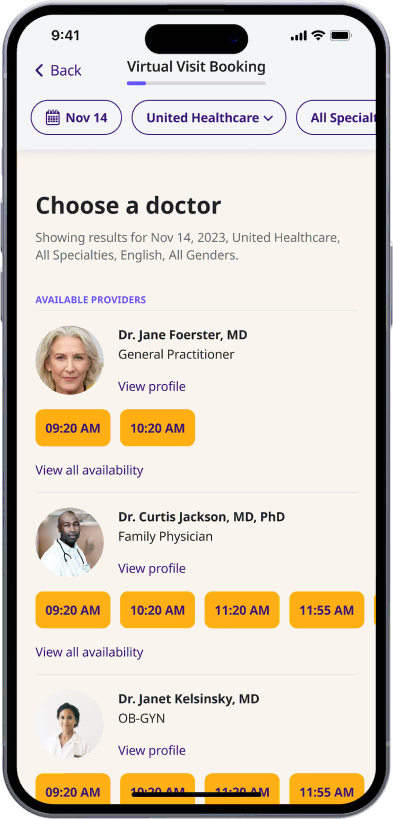
Start your video visit
Connect with a doctor in minutes on a secure video call.
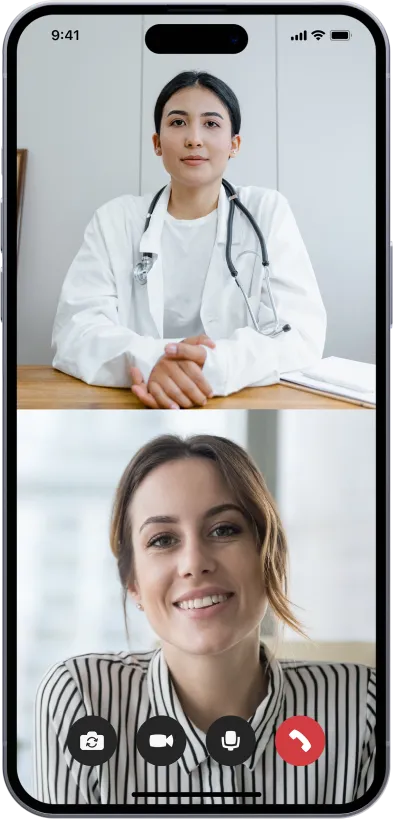
Get your prescription
Pick up your meds or have them delivered in as little as an hour.
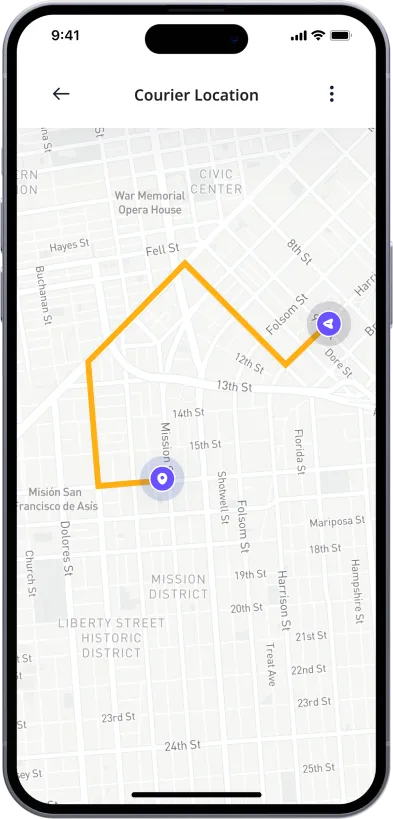
Available in 50 states. Insurance accepted.
One-Time
Physician Visit
One-time visit with a physician for diagnosis, treatment, Rx, labs, referrals, and doctor’s notes.
Accepted Insurances
See why people turn to DrHouse...
As seen in

Contact Dermatitis Treatment Online
Contact dermatitis is an inflammation of the skin resulting from direct contact with irritants or allergens.
This condition manifests as a rash and can be classified into two main types: irritant contact dermatitis (ICD) and allergic contact dermatitis (ACD).
- CD occurs when the skin comes into contact with a toxic substance, leading to a direct chemical injury to the skin.
- ACD, on the other hand, arises from an immune reaction to a substance that the body recognizes as foreign.
Common allergens include nickel, cosmetics, topical medications, and plants like poison ivy.
The symptoms of contact dermatitis vary but typically include redness, itching, and a rash that may blister or peel. These symptoms can appear immediately or develop over time with repeated exposure to the allergen.
The rash is usually confined to the area of direct contact, although in allergic reactions, it can spread if the allergen is transferred to other parts of the body.
Causes of contact dermatitis
Contact dermatitis results from exposure to substances that irritate the skin or trigger an allergic response. The causes can be divided into irritants and allergens, with each category having its own specific triggers.
Irritants
Irritant contact dermatitis (ICD) is the most common type and occurs when chemicals or physical agents damage the outer layer of the skin directly. Common irritants include:
- Soaps and detergents
- Solvents
- Acids and alkalis
- Cement
- Hair dyes
- Bleach and cleaning products
- Rubber gloves
Allergens
Allergic contact dermatitis (ACD) involves an immune response where the skin reacts to an allergen. This type typically develops over time as the skin becomes sensitized to the allergen after repeated exposure. Common allergens include:
- Nickel, commonly found in jewelry and metal fastenings
- Fragrances and preservatives in cosmetics and skincare products
- Plants like poison ivy, poison oak, and poison sumac
- Topical medications such as antibiotic creams or corticosteroids
- Latex, found in medical gloves and certain medical devices
Occupational risks
Certain professions are at higher risk due to regular exposure to irritants and allergens. These include:
- Healthcare workers (due to latex gloves and medical adhesives)
- Hairdressers and beauticians (due to chemicals in dyes and beauty products)
- Construction workers and mechanics (due to solvents and industrial chemicals)
- Florists and gardeners (due to plant allergens and pesticides).
Contact dermatitis symptoms
Contact dermatitis manifests through a variety of symptoms that depend on the nature of the irritant or allergen and the individual’s sensitivity.
These symptoms typically develop at the site of contact with the triggering substance but can also spread.
Here are the most common symptoms associated with both irritant and allergic contact dermatitis:
Common symptoms
- Redness and rash: The skin may appear red and inflamed, and a rash can develop rapidly after exposure to an irritant or allergen.
- Itching: This is one of the most prevalent symptoms, ranging from mild to severe. Itching can be more intense in cases of allergic contact dermatitis.
- Dryness and flaking: The affected area may become dry and flaky, particularly with irritant contact dermatitis which damages the skin’s outer layer.
- Blisters and oozing: In more severe cases, especially with allergic contact dermatitis, blisters can form and break open, leading to oozing and crusting.
Specific symptoms by type
- Irritant contact dermatitis: Often presents as a burning or stinging sensation initially, followed by redness and scaling. Symptoms usually appear soon after exposure to the irritant.
- Allergic contact dermatitis: Typically shows more swelling and blistering, and the reaction may take longer to appear, developing 24 to 48 hours after exposure. The reaction can spread to areas beyond the initial contact point if the allergen is transferred via the hands or clothing.
Severe symptoms
In severe cases, the following may occur:
- Extensive swelling: Severe reactions can lead to swelling in the face, eyes, and genital area, requiring immediate medical attention.
- Widespread rash: If the allergen continues to be in contact or is spread, the rash can cover large areas of the body.
- Secondary infection: Persistent scratching can lead to broken skin, which may become infected with bacteria.
Duration of symptoms
The duration of symptoms can vary. Irritant contact dermatitis typically improves once the irritant is removed and proper skin care is followed. Allergic contact dermatitis may persist longer and require more intensive management, such as avoidance of identified allergens and possibly medical treatment to control the immune response.
How is contact dermatitis treated?
The treatment of contact dermatitis primarily focuses on alleviating symptoms and preventing future outbreaks by avoiding the irritants or allergens that cause them.
Here are the key strategies used in managing this condition:
Immediate care
- Avoidance: The first and most crucial step is to avoid further exposure to the suspected irritants or allergens.
- Skin care: Washing the affected area with soap and water may help remove any remaining irritants or allergens. Cool compresses can also be applied to soothe inflammation and reduce itching.
- Barrier creams: These can be used to protect the skin from irritants, especially in occupational settings.
Medications
- Topical steroids: For mild to moderate dermatitis, corticosteroid creams, and ointments are often prescribed to reduce inflammation and relieve itching.
- Systemic steroids: In severe cases, oral steroids may be necessary to control symptoms, especially if the rash is widespread or particularly inflamed.
- Antihistamines: These can help relieve itching and are particularly useful at night to aid sleep if itching is severe.
Contact dermatitis medication
Medications play a crucial role in the treatment of contact dermatitis, focusing on reducing symptoms and preventing complications. Here are commonly used medications:
Topical medications
- Corticosteroid creams and ointments: These are the mainstay of treatment for reducing inflammation and controlling itching. They are available in various strengths and should be used as directed by a healthcare provider.
- Calcineurin inhibitors: Such as tacrolimus and pimecrolimus, can be used as steroid-sparing agents for areas where skin thinning might occur, like the face and neck.
Oral medications
- Oral corticosteroids: Used for short-term management of severe flare-ups.
- Oral antihistamines: These help reduce itching, especially the sedating types that can also aid sleep.
- Antibiotics: If the skin becomes infected due to scratching, oral antibiotics may be prescribed.
How can DrHouse help?
Our telehealth platform offers convenient and accessible services for managing contact dermatitis. Through our secure and user-friendly telehealth app, patients can connect with a licensed healthcare provider who can assess their symptoms and recommend the most appropriate treatment plan.
Whether it’s prescribing medications, providing home care advice, or referring to a specialist, DrHouse is here to support patients in managing their contact dermatitis and improving their overall skin health. Don’t let the discomfort of contact dermatitis hold you back – download our app today and connect with a provider for personalized care.
Frequently asked questions (FAQs)
Can contact dermatitis be treated online?
Yes, contact dermatitis can be treated online through telehealth platforms like DrHouse. Our licensed healthcare providers can assess your symptoms and provide treatment recommendations, including prescribing medications if necessary.
Can DrHouse prescribe medicine for dermatitis online?
Yes, our healthcare providers can prescribe medications for dermatitis online through our telehealth platform.
Related services
Explore more of our services tailored to your needs and discover additional ways we can support your healthcare needs.
Frequently asked questions


